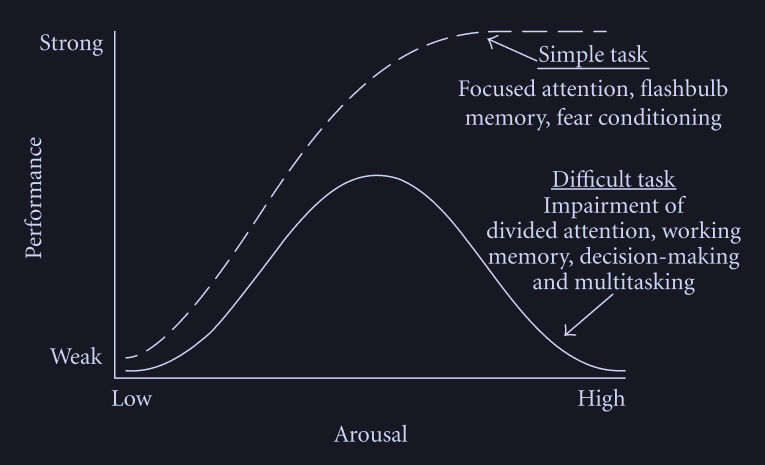A Systematic Method for Rapidly Improving Focus
Published 10-20-2024
I’ve recently been using this concept to dramatically improve my ability to focus while programming, writing, and studying. This article will discuss why it works and concrete examples of how to practice. We’ll begin by exploring focus as a measurable skill we can improve.
Focus as a Skill
From Scott Young’s article “Guide to Increasing Focus”. Scott creates an analogy between the ability to focus and the ability to lift weights.
“Imagine going to the gym, seeing the bench press and telling yourself you’re going to lift 300 lbs. the first day. That’s a recipe for injury and failure.
In contrast, many people aim for schedules with amounts of focus far in excess of anything they’ve pulled off before, and then feel disappointed they couldn’t pull it off. If you struggle to focus for more than an hour at some task, and you plan to do it eight hours straight tomorrow, you can’t be surprised when your plans fail.”
- Scott Young, Author of Ultralearning
Drawing inspiration from this analogy, we’re going to try to safely and gradually build our ability to focus like exercising a muscle. This concept is going to look at improving two qualities of focus over multiple working sessions, while limiting the risk of burnout.
- Duration of focus: How long can we stay focused until distracted.
- Duration of distraction How long does it take us to recognize distraction.
The Practice of Improving Focus
You can use any timer, application, or analog device for this. I personally use Tomatillo Timer as I’m biased and it has features to configure time-frames, select an active task, and log any distractions.
The Setup
Here are the steps I follow to setup a working session.
- Create a task list: I create a list of tasks. Each one should be small.
- Select a task: I select an active task. This is what I’m currently working on.
- Set a timer: I set a timer for a manageable amount of time.
- Easily distracted: Set a short time (10-25 minutes)
- Challenge Yourself: Set a long time (50+ minutes)
The Practice
As you work, study, practice, you may notice (more than usual) that you are frequently distracted by thoughts and feelings. These can often lead to impulses that further distract us: social media, youtube, video games, etc…
We mentioned two qualities of focus we wanted to improve. Duration of focus, and duration of distraction.
You can really only control the duration of distraction. For example, it may be impossible to not feel the urge to do something else. However, you can notice that urge and stop yourself from scrolling twitter for 10 minutes. Try not to get discouraged by how frequently you lose focus. Each time you return to your active task is a step towards improving.
Thus, the process is really simple, but often, not easy.
- Work on the active task
- Notice any distractions that arise
- Return to the active task
- Repeat until time completes
”The skill of focus basically boils down to a tension between two different forces: the desire to work and the desire to quit.”
- Scott Young
Programming and Focus
One particularly challenging aspect of programming in regards to focus. The difficulty of the task (and the appeal of that task) can vary greatly on a task-to-task basis. Ranging from seemingly impossible to boring and tedious.

Anecdotally, when falling into these valleys of low performance, my thoughts have hijacked my focus and sent me seeking distractions to avoid the way those thoughts made me feel.
- Overwhelmed: Feeling overwhelmed by the number of features and complexity needed to compete with other apps.
- Obsolete: Worrying will someone come along and just make something better? Will this be replaced by AI?
- Inferior: Thinking my app isn’t good, feeling like I’m not improving, or feeling that I’m not skilled enough.
This method has helped me accept that discomfort and continue to work through those valleys. More importantly, it’s helped me realize those thoughts are just that; thoughts.
Conclusion
If you’ve ever practiced mindfulness meditation, you may notice that this practice is similar. Instead of focusing on our breath and returning to it when distracted. We focus on a task (and return to it when distracted).
Studies in mental training and mindfulness meditation have shown us that not only is it possible to improve our focus, but we can do so in a relatively short amount of time.
“Moreover, brief mindfulness training significantly improved visuo-spatial processing, working memory, and executive functioning. Our findings suggest that 4 days of meditation training can enhance the ability to sustain attention”
- Mindfulness meditation improves cognition: evidence of brief mental training (2010)
This technique has made noticeable improvements in my focus, and I hope it works for you. To close, if you’d like to join other learning and programming enthusiasts; I’m trying to build a Discord channel for tech, learning, and productivity.
Lastly, I’m trying to build an ecosystem of learning tools. Outside of being a software engineer at Cisco Systems, I build these side-projects (and write these articles) independently. If you liked this article, I’d appreciate if you check them out or share this article :)
- Tomatillo Timer: A highly configurable Pomodoro timer.
- Flotes: A Markdown note-taking application built for learning.
- Better Commits: An open source CLI for making conventional commits.